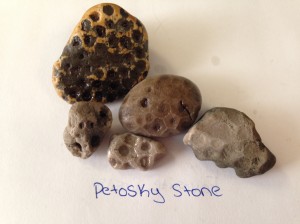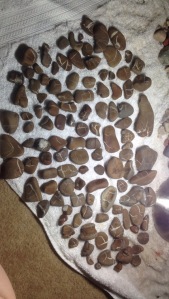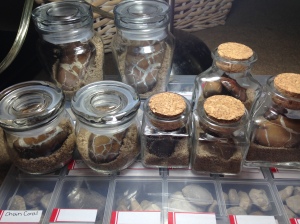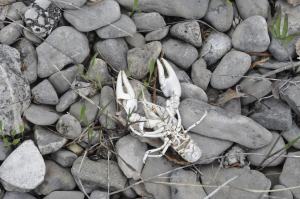Michigan’s number one most identifiable fossil/stone and also our official state stone since 1965 is the Petoskey Stone. These fossils belong to the Hexagonaria Percarinata group originally from 350 million years ago, they are bits of those coral heads and most identifiable ones can be immediately spotted only if wet or if you know what you are looking for, otherwise they appear to be limestone. They do primarily reside in Lake Michigan between Charloix and Petoskey. I had the best luck driving Lake Shore Dr between the two cities, On the drive they have several roadside beach stops. The 3rd one from Charoloix I had the best luck with since it seemed to be a less common location for anything but boat launch. Try avoiding the big bleached piles of rocks outside of the water since those are the most commonly dug through. I went out further in the water because a lot of the pads of plants out there were protecting some of the stones and you can walk pretty far out without going above your ankles. I actually find more Petoskey stones outside of Petoskey since that’s where everyone goes to retrieve them and the natives farm them to sell. While out there you may spot a stone that is pretty similar to Petosky known as honeycomb fossils/ Charloix stones. They will have pitted holes in the stone also, but the key identifier is that the Petoskey will almost represent a hexagon outline with little lines almost representing a flower. Honeycomb fossils are a slight relative also to Favosite fossils (But do not have the distinctive tail following the holes that the favosites have) It is not advised to put these guys into a tumbler since they could get damaged with other stones and are older than most of the other stones you will find. If you make direct cuts into the fossil you will notice the pattern is throughout the stone and not just on the surface. I have noticed you can find Petoskey stones farther down the lake Michigan shoreline but if you cut through most of these they are only a pattern on the stone from being next to one of the fossils for a while. These stones if polished correctly can have a very high resell value inside the state and more so outside the state the farther from lake Michigan you are.
Picture: All are Petoskey Stone Specimens, How they were found. Shape of stone clearly varies. The Large Upper left yellow and black stone is a extremely weathered honeycomb fossil found on the Chicago side of Lake Michigan.







